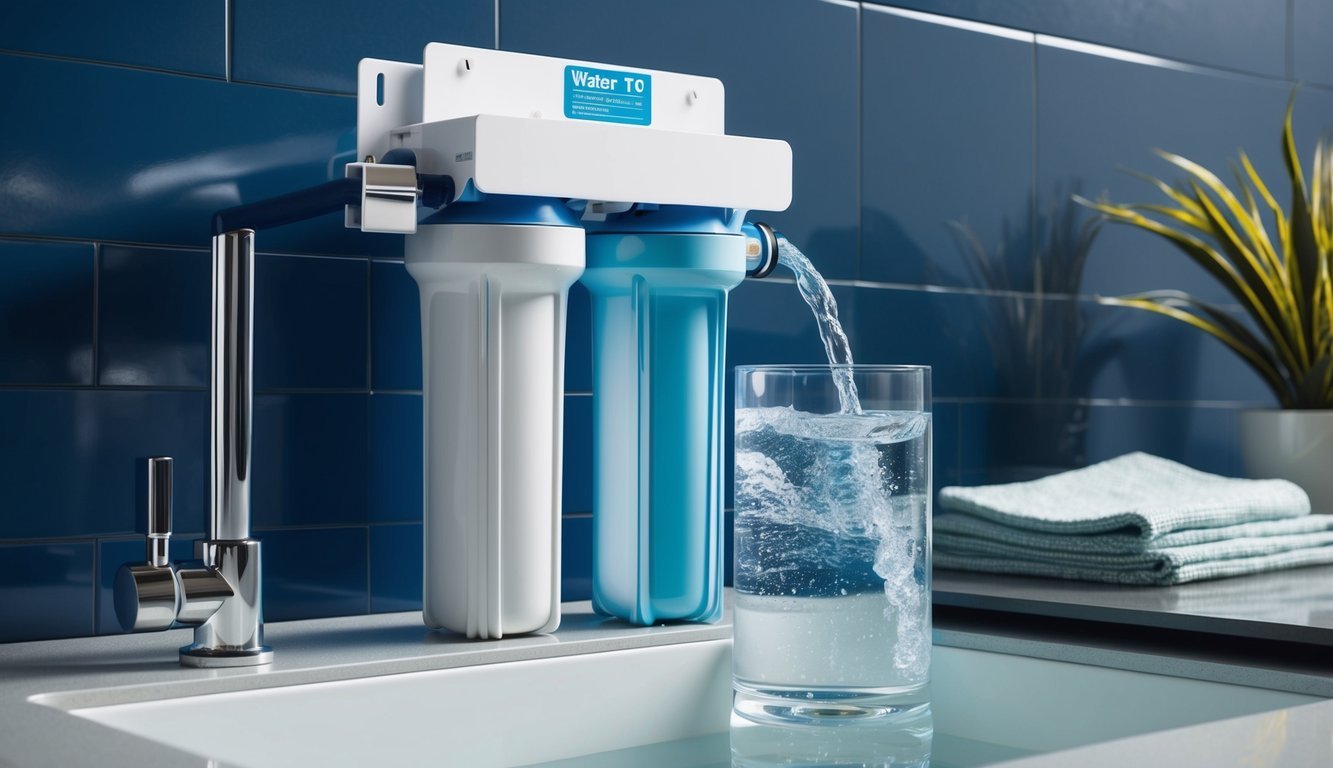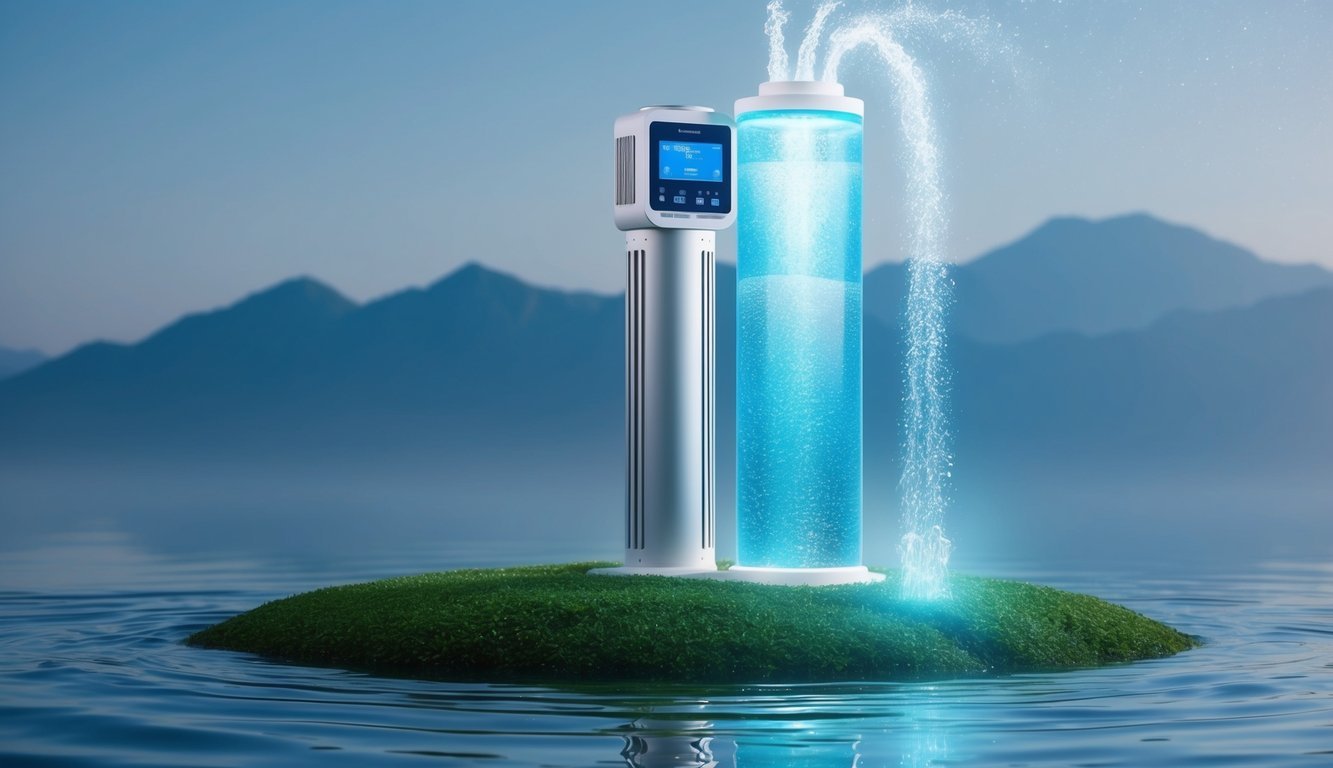PsychNewsDaily Publishers
100 Summit Drive
Burlington, MA, 01803
Telephone: (320) 349-2484
PsychNewsDaily Publishers
100 Summit Drive
Burlington, MA, 01803
Telephone: (320) 349-2484

The need for clean water is a growing concern worldwide. Recent innovations in water purification technology have led to methods that promise to transform how we access safe drinking water. Scientists discovered a new instant purification method that is millions of times more effective at eliminating germs than traditional techniques.
This breakthrough means that not only can more bacteria be killed more quickly, but it also uses significantly less energy than existing systems. With the ability to purify water in a matter of moments, this technology could drastically change water treatment processes, making them more efficient and widely accessible.
As communities face increasing water quality issues, this advancement could provide a powerful solution. People everywhere may soon benefit from faster and safer water purification, ensuring that clean water is within reach for everyone.

Clean water is essential for health and well-being. Without it, people cannot stay hydrated or enjoy good health.
Safe drinking water helps prevent waterborne diseases such as cholera and dysentery. These illnesses can spread quickly and have serious effects, particularly in communities lacking clean resources.
Water scarcity is a growing issue around the world. Many regions struggle to access enough clean water for daily needs. This can lead to serious health risks and limit economic development.
Access to clean drinking water is crucial in everyday life. It supports hygiene, nutrition, and overall health. When people have safe water, they can avoid illnesses and lead healthier lives.
Innovations in water purification technology can greatly improve accessibility. New methods promise to provide clean water that is much safer than older techniques. This offers hope to areas suffering from water quality issues.

Water can contain various contaminants that affect its safety and quality. Understanding these contaminants and the methods used for filtration helps people make informed choices about their drinking water.
Water may be polluted by different types of contaminants. These can include:
Heavy Metals: Metals like lead and arsenic can enter water from pipes and industrial processes. They pose serious health risks.
Microorganisms: Viruses, bacteria, and protozoa, such as E. coli, can cause illnesses. They often come from sewage or agricultural runoff.
Chemicals: Substances like chloramine and pesticides can contaminate water supplies. These can come from farming and water treatment plants.
Microplastics: Small plastic particles can enter waterways through waste and pollution. They are hard to filter and pose risks to marine life and health.
Understanding these contaminants is crucial for effective water treatment.
Several traditional methods are used to treat and filter water. Some of the most common include:
Activated Carbon Filters: These filters are effective at removing chemicals, tastes, and odors. They can also reduce chlorine and some heavy metals.
Reverse Osmosis: This technology uses membranes that allow water to pass while blocking contaminants. It is effective against heavy metals, salts, and some microorganisms.
Pitcher Filters: These are simple and affordable. They often use activated carbon to improve water taste and reduce certain contaminants.
Chlorination: This method helps disinfect water but may not remove some chemicals and heavy metals.
Each technology has its strengths and limitations. Selecting the right one depends on the specific contaminants present in the water supply.

Recent advancements in water purification technology focus on sustainability and efficiency. These innovations aim to provide cleaner drinking water while reducing environmental impact. From breakthroughs in membrane science to improvements in desalination methods, these technologies are transforming water treatment.
New developments in membrane technology greatly enhance water purification. Researchers have created membranes that can remove contaminants at incredibly high rates, making them millions of times more effective than older methods.
These advanced membranes use nanomaterials, which allow for precise filtration of tiny particles, bacteria, and viruses. This process results in cleaner water without needing heavy chemicals.
The membranes are also durable and require less maintenance. As a result, they are ideal for a variety of settings, from urban areas to remote locations where access to clean water is limited.
Desalination technology has seen important improvements too. New systems use low-level electric pulses to treat seawater, turning it into drinking water. This method requires significantly less energy compared to traditional desalination processes.
By using renewable energy sources, like solar power, these systems can operate sustainably. This means they can produce clean water without increasing carbon footprints. These advancements make it easier for coastal regions to access fresh water.
Additionally, new energy-efficient methods help reduce salt concentrations, making the water safer and more pleasant to drink.
The latest water purification technologies are designed to be both scalable and accessible. Portable filtration systems allow individuals or communities to access clean water quickly, without large infrastructure investments.
For example, systems like Wateroam can filter contaminated water in minutes, making them perfect for emergencies or rural areas.
These innovations support sustainable development goals by providing clean water where it was previously unavailable. By focusing on ease of use and efficiency, these systems help address water scarcity in various regions worldwide.

Water security is crucial for good health around the world. Access to safe drinking water helps prevent many health problems. When people have clean water, they can enjoy healthier lives.
Waterborne diseases are a major concern. They can spread quickly in areas with contaminated water. Some common diseases include cholera, dysentery, and typhoid. The rise of these diseases often links to a lack of water security.
Efforts to improve water security can make a big difference. Here are some key points:
Protecting Water Sources: Clean rivers and lakes are vital. Managing these sources helps reduce pollution and keeps water safe.
Using Technology: New technologies, like advanced filters, can purify water faster and more effectively. This means cleaner drinking water for everyone.
Community Education: Teaching communities about water hygiene is important. Knowing how to store and use water safely helps prevent disease spread.
When water is secure, communities thrive. Healthier people lead to stronger economies and better overall quality of life. Ensuring everyone has access to safe drinking water is essential for global health.

The future of water purification technologies shows promise in improving efficiency while also addressing environmental concerns. Innovations aim to minimize energy consumption and enhance sustainability, ensuring access to safe drinking water for all.
Emerging water purification methods emphasize sustainability and reduced energy use. Technologies like nanofiltration and low-pressure membrane systems allow for more precise contaminant removal. These methods often use renewable energy sources, which help lower their carbon footprint.
Moreover, integrating artificial intelligence can optimize processes, thus reducing waste. For example, smart systems can predict water quality changes, allowing for timely adjustments. This proactive approach promotes a safer water supply while also conserving resources.
Sustainable practices in water treatment can lead to long-term benefits. Cleaner water sources contribute to healthier ecosystems and communities. The aim is to create systems that not only purify water but also protect the environment.
Despite the advantages, introducing new water purification technologies faces obstacles. High initial costs can deter many communities from investing in these improvements. Training and education are essential to ensure proper use and maintenance.
Infrastructure limitations may also pose challenges. Many regions may need updated systems to support advanced technologies. In addition, regulatory hurdles can slow down the approval of innovative solutions.
Public perception is crucial. Gaining trust in new methods requires transparency about processes and benefits. Establishing effective communication can help engage communities in adopting safer, more efficient water purification technologies.

This section addresses common questions about the latest advancements in water purification technology. It explores innovations, reliability of methods, and environmental considerations.
Recent innovations include instant water purification technologies that claim to be much more effective than traditional methods. One example is the use of hydrogen and oxygen to create disinfectants that kill bacteria and viruses effectively.
UV filtration is a well-known method used worldwide. It effectively kills pathogens in water without adding chemicals. For large-scale use, properly designed systems can meet safety standards and ensure clean water.
Nanotechnology filters work at a molecular level to trap smaller particles and contaminants. They can remove bacteria, viruses, and heavy metals more efficiently than standard filters, improving water quality significantly.
New water purification technologies can have both positive and negative environmental impacts. While they often reduce chemical use and waste, some methods may consume more energy or resources, making careful evaluation important.
While many advanced methods can remove a wide range of contaminants, no single technology is perfect. Many systems are better at targeting specific types of pollutants, so a combination of methods is often necessary for complete purification.
The cost-effectiveness of water purification technologies varies. Activated carbon filters are inexpensive and widely used. More advanced technologies, though effective, may require higher initial investments but can save money over time with greater efficiency.